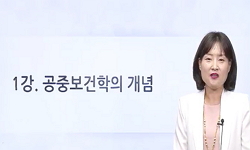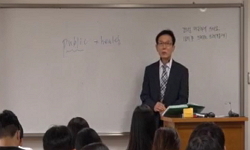사회·경제적인 발전이 이루어짐에 따라 초등학교 아동의 비만은 심각한 수준에 이르러서 중요한 사회문제로 대두되고 있다. 이러한 아동의 비만은 신체적, 심리적으로 부정적인 영향을 일...
http://chineseinput.net/에서 pinyin(병음)방식으로 중국어를 변환할 수 있습니다.
변환된 중국어를 복사하여 사용하시면 됩니다.
- 中文 을 입력하시려면 zhongwen을 입력하시고 space를누르시면됩니다.
- 北京 을 입력하시려면 beijing을 입력하시고 space를 누르시면 됩니다.
초등학생의 비만여부별 자기효능감 및 학업성취도 = Obesity Self-efficacy and Academic Achievement of Elementary School Students
한글로보기https://www.riss.kr/link?id=T11553324
- 저자
-
발행사항
서울 : 한양대학교 교육대학원, 2009
-
학위논문사항
학위논문(석사) -- 한양대학교 교육대학원 , 보건교육전공 , 2009. 2
-
발행연도
2009
-
작성언어
한국어
- 주제어
-
발행국(도시)
서울
-
형태사항
vi, 90 p. : 삽도 ; 26 cm.
-
일반주기명
지도교수: 김윤신
국문요지: p. i-ii.
Abstract: p. 83-84.
부록으로 설문지 수록.
참고문헌 : p.72-82. - 소장기관
-
0
상세조회 -
0
다운로드
부가정보
국문 초록 (Abstract)
대상자의 개인적 특성에서 학년별로 보면, 5학년은 정상아동이 비만아동보다 많았으나 6학년은 비만아동이 정상아동보다 많았고, 비만아동은 학년이 올라갈수록 높게 나타났다. 대상자의 사회 · 경제적 특성에서는 월 용돈의 경우 비만아동이 정상아동보다 월 용돈을 더 많이 받는 것으로 조사되었다. 대상자의 식습관 특성에서는 가정 내 식사습관의 경우 정상아동은 채식위주의 소식이, 비만아동은 육식위주의 소식이 가장 높은 비율을 나타냈으며 외식음식의 경우 두군 모두 한식이 가장 높은 비율을 나타냈으며 양식, 패스트푸드, 중식에서는 비만아동이 정상아동보다 높은 비율을 보였다. 또한, 정상아동은 비만아동보다 자기효능감과 학업성취도에서 유의한 차이로서 높게 나타났다.
대상자의 자기효능감과 학업성취에서 정적상관을 나타내었고, 정상아동의 일반적 특성에 따른 자기효능감과 학업성취도의 정도에서 1일 TV 시청시간의 경우 ‘TV를 보지 않는다’ 아침식사의 경우 ‘매일 먹는다’ , 식사시간 규칙성 여부에서는 ‘식사시간이 매우 규칙적이다’ 가 자기효능감이 가장 높게 나타났으며 학업성취도의 경우 6학년의 학업성취도가 5학년에 비해 유의하게 높았다.
비만아동의 일반적 특성에 따른 자기효능감과 학업성취도의 정도에서 1일 TV 시청시간의 경우 ‘TV를 보지 않는다’ 식사시간의 경우 ‘식사시간이 매우 규칙적이다', 군것질 횟수의 경우 '군것질 횟수가 1회 미만이다' 라고 응답한 집단이 자기효능감이 가장 높게 나타났으며 학업성취도에서 ‘식사시간이 매우 규칙적이다’ 라고 응답한 집단이 학업성취도가 가장 높게 나타났고 유의한 차이가 있었다.
이와 같은 연구결과를 바탕으로 학교에서는 정상아동이 비만으로 진행되지 않도록 비만예방 보건교육을 지속적으로 실시하도록 하며 담임교사는 비만아동을 대상으로 학습과정에서 자기효능감을 높여서 학업성취를 향상 시킬 수 있도록 심리적, 물리적 환경을 제공하는 배려와 관심이 필요하다고 본다.
사회·경제적인 발전이 이루어짐에 따라 초등학교 아동의 비만은 심각한 수준에 이르러서 중요한 사회문제로 대두되고 있다. 이러한 아동의 비만은 신체적, 심리적으로 부정적인 영향을 일으킨다고 보고되었다. 또한 자기효능감은 학업성취도와 유의한 관련이 있는 것으로 보고되어 있어 비만은 학생들의 학업성취와도 관련이 있을 것으로 추측된다. 이에 본 연구는 초등학교 5, 6학년 정상아동과 비만아동을 대상으로 자기효능감과 학업성취도에 관한 비교를 하여 그 차이를 조사하고 자기효능감과 학업성취도와의 상관관계를 확인하는 것으로 이는 비만아동의 특성에 대한 올바른 이해를 돕고 자기효능감과 학업성취도를 증진시키는데 대한 기초자료를 제공하는데 목적이 있다. 2008년 9월 1일부터 14일까지 경기도 P시와 Y시의 4개 초등학교를 임의로 선정하여 5, 6학년 아동 437명( 정상아동: 261명, 비만아동: 176명)을 대상으로 설문조사방법을 통하여 연구하였다. 분석방법은 SPSS WIN 12.0 프로그램을 사용하여 빈도분석, 교차분석, t-test, ANOVA, pearson 상관계수를 사용하였으며 연구 결과는 다음과 같다.
대상자의 개인적 특성에서 학년별로 보면, 5학년은 정상아동이 비만아동보다 많았으나 6학년은 비만아동이 정상아동보다 많았고, 비만아동은 학년이 올라갈수록 높게 나타났다. 대상자의 사회 · 경제적 특성에서는 월 용돈의 경우 비만아동이 정상아동보다 월 용돈을 더 많이 받는 것으로 조사되었다. 대상자의 식습관 특성에서는 가정 내 식사습관의 경우 정상아동은 채식위주의 소식이, 비만아동은 육식위주의 소식이 가장 높은 비율을 나타냈으며 외식음식의 경우 두군 모두 한식이 가장 높은 비율을 나타냈으며 양식, 패스트푸드, 중식에서는 비만아동이 정상아동보다 높은 비율을 보였다. 또한, 정상아동은 비만아동보다 자기효능감과 학업성취도에서 유의한 차이로서 높게 나타났다.
대상자의 자기효능감과 학업성취에서 정적상관을 나타내었고, 정상아동의 일반적 특성에 따른 자기효능감과 학업성취도의 정도에서 1일 TV 시청시간의 경우 ‘TV를 보지 않는다’ 아침식사의 경우 ‘매일 먹는다’ , 식사시간 규칙성 여부에서는 ‘식사시간이 매우 규칙적이다’ 가 자기효능감이 가장 높게 나타났으며 학업성취도의 경우 6학년의 학업성취도가 5학년에 비해 유의하게 높았다.
비만아동의 일반적 특성에 따른 자기효능감과 학업성취도의 정도에서 1일 TV 시청시간의 경우 ‘TV를 보지 않는다’ 식사시간의 경우 ‘식사시간이 매우 규칙적이다', 군것질 횟수의 경우 '군것질 횟수가 1회 미만이다' 라고 응답한 집단이 자기효능감이 가장 높게 나타났으며 학업성취도에서 ‘식사시간이 매우 규칙적이다’ 라고 응답한 집단이 학업성취도가 가장 높게 나타났고 유의한 차이가 있었다.
이와 같은 연구결과를 바탕으로 학교에서는 정상아동이 비만으로 진행되지 않도록 비만예방 보건교육을 지속적으로 실시하도록 하며 담임교사는 비만아동을 대상으로 학습과정에서 자기효능감을 높여서 학업성취를 향상 시킬 수 있도록 심리적, 물리적 환경을 제공하는 배려와 관심이 필요하다고 본다.
다국어 초록 (Multilingual Abstract)
From Sep. 1, 2008 to Sep. 14, 2008, out of 4 elementary schools selected randomly in P and Y cities of Kyunggi-province, 437 students from 5th and 6th grade students (Normal children: 261, obese children:176) were given the questionnaires. The analysis method uses frequency analysis, crossing analysis, T-test, ANOVA and the Pearson correlation coefficient by making use of SPSS WIN 12.0 program and the research results are as below.
From the investigated student personal traits, there were more normal children than overweight children in 5th grade students but there were more obese children than normal children in 6th grade. Obesity rate increased for higher grades. From the investigated students' social and economical traits, overweight children received more pocket money than normal ones. From the investigated students' eating habits in their family, normal children's vegetable-centered meals and obese children's meat-centered meal were at the highest rates, in the case of dining out, both groups showed the highest rate in Korean-style food and overweight children showed a higher rate in western-style food, fast food and Chinese-style food than normal children. Normal children had higher self-efficacy and academic achievement than obese children, which showed a meaningful difference.
The self-efficacy and academic achievement of investigated students showed a static correlation, according to the level of self-efficacy and academic achievement of normal children with general traits, in the case of time of watching TV per day, 'don't watch TV', in the case of breakfast, 'eat breakfast every morning' and in the case of mealtime regularity, 'mealtime is very regular' : those cases showed the highest self-efficacy, in the case of academic achievement, the academic achievement of 6th grade students was higher than that of 5th grade, for which there was meaningful difference.
According to the level of self-efficacy and academic achievement of overweight children with general traits, in the case of time of watching TV a day, 'don't watch TV', in case of mealtime, 'mealtime is very regular' and in case of eating junk food, 'number of times of eating junk food is less than one time': those cases showed the highest self-efficacy, in case of academic achievement, 'mealtime is very regular': those cases showed the highest academic achievement, for which there was meaningful difference.
On the basis of these research results, each school should perform health education for prevention of obesity to prevent normal children from becoming overweight children and class teachers should be interested in providing obese children with psychological and physical environments that make their academic achievement improvement possible through increasing their self-efficacy in the course of education.
According to social and economical improvements, the elementary student obesity issue has reached a serious level and has been a critical social upheaval. It was reported that this children's obesity issue caused a negative influence physically and ps...
According to social and economical improvements, the elementary student obesity issue has reached a serious level and has been a critical social upheaval. It was reported that this children's obesity issue caused a negative influence physically and psychologically. From the report that self-efficacy is related to academic achievement, it is assumed that obesity is in relation to student academic achievement. This research compares the difference between self-efficacy and academic achievement of 5, and 6 grade elementary students and confirms the correlation of self-efficacy and academic achievement. This research aims to help understanding on children's obesity property and to provide basic data for improving self-efficacy and academic achievement.
From Sep. 1, 2008 to Sep. 14, 2008, out of 4 elementary schools selected randomly in P and Y cities of Kyunggi-province, 437 students from 5th and 6th grade students (Normal children: 261, obese children:176) were given the questionnaires. The analysis method uses frequency analysis, crossing analysis, T-test, ANOVA and the Pearson correlation coefficient by making use of SPSS WIN 12.0 program and the research results are as below.
From the investigated student personal traits, there were more normal children than overweight children in 5th grade students but there were more obese children than normal children in 6th grade. Obesity rate increased for higher grades. From the investigated students' social and economical traits, overweight children received more pocket money than normal ones. From the investigated students' eating habits in their family, normal children's vegetable-centered meals and obese children's meat-centered meal were at the highest rates, in the case of dining out, both groups showed the highest rate in Korean-style food and overweight children showed a higher rate in western-style food, fast food and Chinese-style food than normal children. Normal children had higher self-efficacy and academic achievement than obese children, which showed a meaningful difference.
The self-efficacy and academic achievement of investigated students showed a static correlation, according to the level of self-efficacy and academic achievement of normal children with general traits, in the case of time of watching TV per day, 'don't watch TV', in the case of breakfast, 'eat breakfast every morning' and in the case of mealtime regularity, 'mealtime is very regular' : those cases showed the highest self-efficacy, in the case of academic achievement, the academic achievement of 6th grade students was higher than that of 5th grade, for which there was meaningful difference.
According to the level of self-efficacy and academic achievement of overweight children with general traits, in the case of time of watching TV a day, 'don't watch TV', in case of mealtime, 'mealtime is very regular' and in case of eating junk food, 'number of times of eating junk food is less than one time': those cases showed the highest self-efficacy, in case of academic achievement, 'mealtime is very regular': those cases showed the highest academic achievement, for which there was meaningful difference.
On the basis of these research results, each school should perform health education for prevention of obesity to prevent normal children from becoming overweight children and class teachers should be interested in providing obese children with psychological and physical environments that make their academic achievement improvement possible through increasing their self-efficacy in the course of education.
목차 (Table of Contents)
- Ⅰ. 서론 = 1
- 1. 연구의 필요성 = 1
- 2. 연구목적 = 3
- 3. 용어의 정의 = 4
- Ⅱ. 이론적 배경 = 6
- Ⅰ. 서론 = 1
- 1. 연구의 필요성 = 1
- 2. 연구목적 = 3
- 3. 용어의 정의 = 4
- Ⅱ. 이론적 배경 = 6
- 1. 학령기 아동의 비만 = 6
- 2. 자기효능감 = 10
- 3. 학업성취도 = 16
- Ⅲ. 연구방법 = 21
- 1. 연구 설계 = 21
- 2. 연구대상 = 22
- 3. 조사기간 및 방법 = 22
- 4. 조사도구 = 22
- 5. 자료분석방법 = 24
- Ⅳ. 연구 결과 = 25
- 1. 정상아동과 비만아동의 일반적 특성 비교 = 25
- 2. 정상아동과 비만아동의 자기효능감 비교 = 33
- 3. 정상아동과 비만아동의 학업성취도 비교 = 46
- 4. 대상자의 자기효능감과 학업성취도와의 상관관계 = 47
- 5. 정상아동의 일반적 특성에 따른 자기효능감과 학업성취도 정도 = 48
- 6. 비만아동의 일반적 특성에 따른 자기효능감과 학업성취도 정도 = 53
- Ⅴ. 논의 = 58
- 1. 정상아동과 일반아동의 일반적 특성 비교 = 58
- 2. 정상아동과 비만아동의 자기효능감과 학업성취도 = 64
- Ⅵ. 결론 및 제언 = 69
- 참고문헌 = 72
- ABSTRACT = 83
- 부록 질문지 = 85












